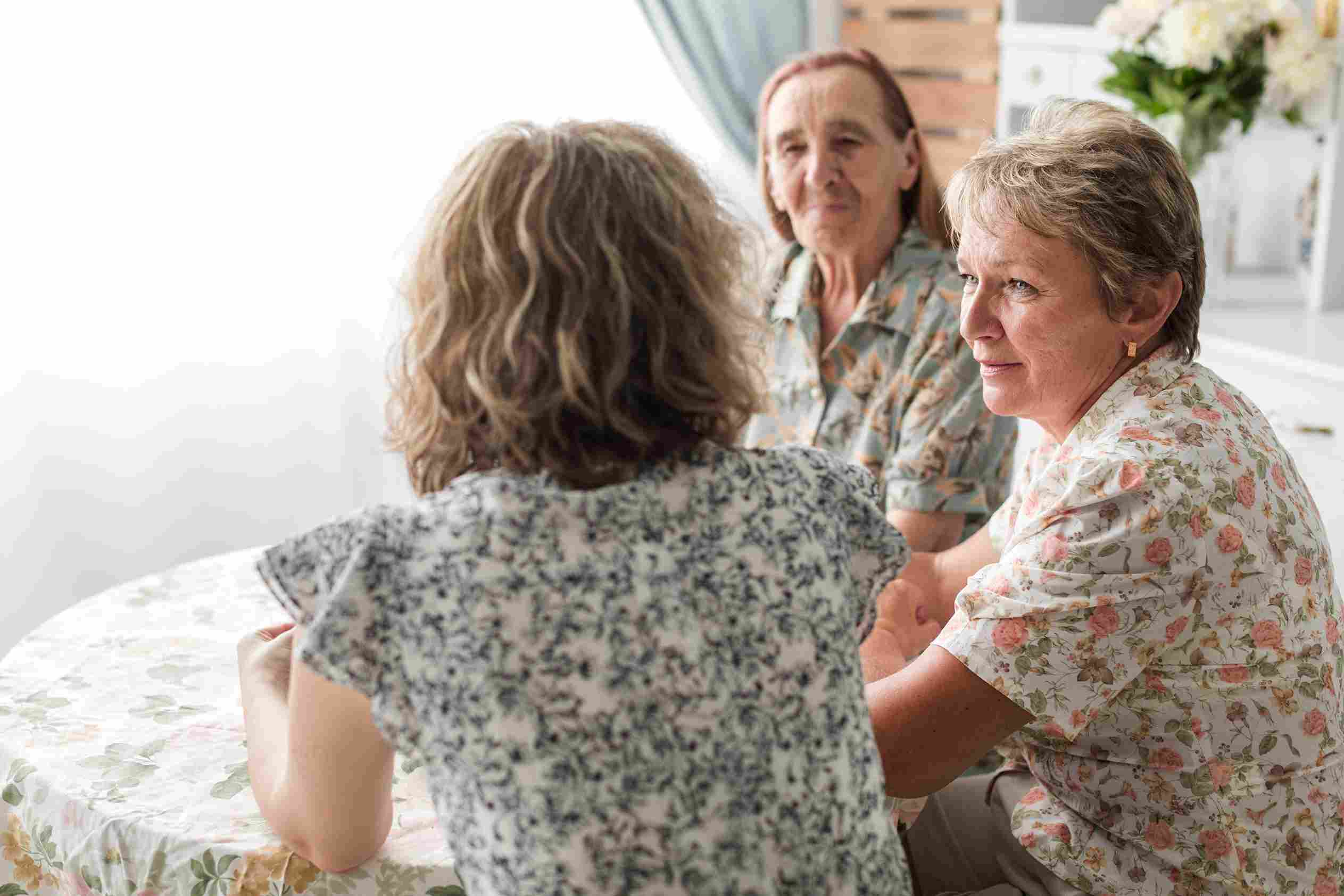In the realm of hospice care, creating meaningful moments through purposeful activities is more than just a pastime; it's an opportunity to celebrate life and foster connections. This article will explore the world of social activities, memory-making ideas at the end of life, and the power of engaging in end-of-life activities. We'll delve into the significance of social outings and legacy activities while highlighting the importance of social care activities. Plus, we'll provide an extensive list of activity ideas specifically tailored for hospice patients. Join us on this journey as we uncover the profound impact these activities have in brightening the lives of patients and their families during challenging times.
The Importance of Meaningful Activities
In hospice care, creating meaningful moments through activities is not only about passing the time; it's a way to enrich the lives of patients and their families. Social activities, such as group discussions, game nights, and shared meals, offer valuable opportunities for patients to connect with others. These interactions provide emotional support, reduce feelings of isolation, and create a sense of belonging.
End-of-life activities go beyond mere distraction; they enhance the quality of life and emotional well-being of patients. Engaging in activities allows patients to focus on positive experiences, fostering a sense of joy and accomplishment, even in the face of illness. These moments can be facilitated and supported by dedicated social workers who play a crucial role in ensuring that hospice patients and their families experience the full benefits of these enriching activities.
- Tailoring Activities to Individual Needs.
Activity Ideas for Hospice Patients come in a variety of forms, catering to diverse interests and abilities. Arts and crafts provide an outlet for creative expression, while music therapy can soothe the soul. Storytelling and reminiscence activities help patients share their life stories, preserving cherished memories.
Adapting Activities is essential to ensure that patients can participate comfortably and safely. Patients' physical and emotional conditions may vary, so it's crucial to modify activities accordingly. For example, a quiet reading session might be suitable for some, while others may prefer lively group discussions.
- The Power of Memory-Making Activities
Memory-making ideas at the end of life hold a unique significance for both patients and their families. These activities offer a precious opportunity to create lasting memories that transcend the challenges of end-of-life care. Whether it involves crafting memory books, recording personal messages, or engaging in art projects, these endeavors can profoundly touch the hearts of those involved. The impact is twofold: not only do these activities provide comfort to patients, but they also leave behind a legacy that brings solace and treasured moments for loved ones.
The Therapeutic Benefits of memory-making ideas at the end of life are remarkable. They serve as therapeutic outlets that enable patients to reflect on their lives, express their feelings, and share their accumulated wisdom. In the process of creating memories, patients find a space for introspection and connection with their own life journey. These moments of reflection and connection can bring profound emotional healing, offering a sense of closure and completeness. Memory-making ideas at the end of life truly hold the power to heal and provide comfort during end-of-life activities. Our team specializes in facilitating and supporting these meaningful endeavors, ensuring that they bring comfort and solace to hospice patients and their families.
- Fostering Connections Through Activities
Social Outings provide a change of scenery and a breath of fresh air for hospice patients. These experiences go beyond the confines of their immediate surroundings, allowing them to explore life beyond illness. Whether it's a visit to a beloved park, a family picnic under the open sky, or attending a special event in the community, these outings offer patients the opportunity to connect with their loved ones and the world around them. It's a chance to create new, cherished memories that transcend the hospice environment. Additionally, these outings can play a significant role in providing grief support to both patients and their families by offering moments of joy and togetherness during a challenging time.
Legacy Activities, on the other hand, offer patients a way to leave behind something profoundly meaningful for their families and future generations. These activities encompass documenting life stories, recording video messages, or creating artwork that encapsulates their unique spirit and experiences. By doing so, patients ensure that their presence endures even after they have passed away. These activities are not merely creative endeavors but acts of love and remembrance. They create lasting bonds and cherished memories that can be revisited time and again, bringing comfort and connection to those left behind. Legacy Activities, in essence, provide a form of grief support that extends beyond the patient's lifetime, offering a sense of continuity and love even in their absence.
- The Importance of Social Care Activities
Social Care Activities extend the circle of care beyond the patient's room. Here, the invaluable role of hospice staff and volunteers comes to the forefront. They play a vital role in organizing and facilitating activities that promote emotional well-being and connection. Their presence and dedication provide essential support and companionship to both patients and their families.
Supporting the Hospice Journey goes hand in hand with social care activities. Hospice staff and volunteers are not just caregivers; they are the architects of an environment built on care and compassion. Through these activities, they help foster such an environment, enriching the lives of patients and their families. In these moments of joy and connection, the true essence of hospice care shines through—offering comfort, solace, and the warmth of human connection during a challenging and vulnerable time.
The power of these activities lies in their ability to create meaningful moments, strengthen bonds, and provide comfort, ensuring that the hospice journey is not just about end-of-life care but also about celebrating the life that has been lived.
Comprehensive List of Activities for Hospice Patients
When it comes to providing meaningful moments for hospice patients, the options are as diverse as the individuals themselves. Recreational Activities for the Hospice Patient encompass a wide range of choices, all designed to cater to individual preferences and abilities. Here, patients can find solace, joy, and connection in activities that speak to their interests and passions.
- Gardening: Creating a small garden or tending to potted plants can be a therapeutic and fulfilling activity for patients who enjoy being outdoors and nurturing living things.
- Artistic Expression: Painting, drawing, or engaging in other forms of artistic expression allows patients to convey their emotions, memories, and creativity.
- Music Therapy: Playing musical instruments, singing, or simply listening to music can soothe the soul and provide comfort during end-of-life care.
- Outdoor Enjoyment: For patients who relish the outdoors, spending time in nature, going for walks, or having picnics can offer moments of serenity and connection.
- Crafting: Engaging in crafts such as knitting, crocheting, or woodworking can provide patients with a sense of accomplishment and relaxation.
- Storytelling: Sharing and listening to stories can be a deeply meaningful activity. Patients can recount their life experiences or enjoy listening to tales from their loved ones.
- Cooking and Baking: Preparing and enjoying favorite dishes and treats can evoke cherished memories and create a sense of comfort.
- Poetry Reading: Poetry has the power to touch the heart. Patients can read their favorite poems or explore new ones together with their families.
- Pet Therapy: Interaction with therapy animals can bring joy and comfort to patients. Petting and spending time with animals can provide a sense of companionship.
- Relaxation and Meditation: Guided relaxation and meditation sessions can help patients find peace and reduce stress, offering moments of tranquility.
Activity Ideas offer inspiration for both patients and caregivers, sparking creativity and connection. These ideas encompass various interests, hobbies, and passions, ensuring that there's something for everyone.
In conclusion, meaningful moments through activities in hospice care have the power to transform the end-of-life journey for patients and their families. Social activities, memory-making endeavors, and end-of-life activities provide comfort, connection, and solace during challenging times. These moments create lasting bonds and cherished memories, reminding us that life can be celebrated, even in its final chapters.
As you navigate the hospice journey, remember that these activities offer not just respite from illness but also opportunities for joy, reflection, and connection. Hospice care is about embracing life, celebrating moments, and leaving a legacy of love and togetherness.




















.webp)

.png)


